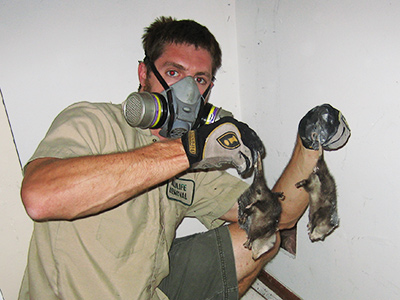
I have a really good nose! Sure, there's various dead-animal location technology, such as FLIR heat-detection devices that can detect decaying bodies (which are warmer) or corpse-sniffing dogs, but these things aren't always helpful.
A lot of animals die in attics, where a dog doesn't help, or ductwork or other places where you can't see heat. The best technology is my nose and my experience! My nose is so good that I can usually detect the species of animal just
by the smell! I know animal behavior and architecture so well that I have an excellent instinct about where the carcass lies.
Welcome to Chicago Dead Animal! It is our number one goal to eliminate pest and dead animal problems in residential and business premises – and we do this by eliminating every aspect of the problem. Our team of friendly, highly trained, and properly licensed and insured controllers will start by locating the dead or alive animal(s) before then coming up with a plan on how to retrieve it. There are laws dictating the handling of certain animals, specifically dead animals, but we take the worry out of the process by being fully trained in those laws, which often change from state-to-state, and can even change from city-to-city. We can locate and remove all dead nuisance wildlife, including birds, squirrels, raccoons, opossums, foxes, rodents, and more. Just give us a call and tell us what the problem is and we’ll take care of the rest. Our specialist team promises to find and remove dead animals, and then completely decontaminate the area so that no biological hazards remain. Along with that, our highly effective deodorising process ensures that no nasty smells linger in the building – a common and very unwanted side effect of having animals, live or dead, on the property. Dealing with these scenarios are unpleasant, and can cause emotional distress to those who would much rather not deal with such a situation – but that’s where we come in. In just one visit, we can locate, remove, sanitise, and then restore – and we’ll make sure that we’ve properly cleaned up afterwards, too.
